Fireplace hearth ideas - 10 practical and stylish tips for any room
Discover the best design ideas for your hearth, plus how to style it for a cosy and inviting fireside

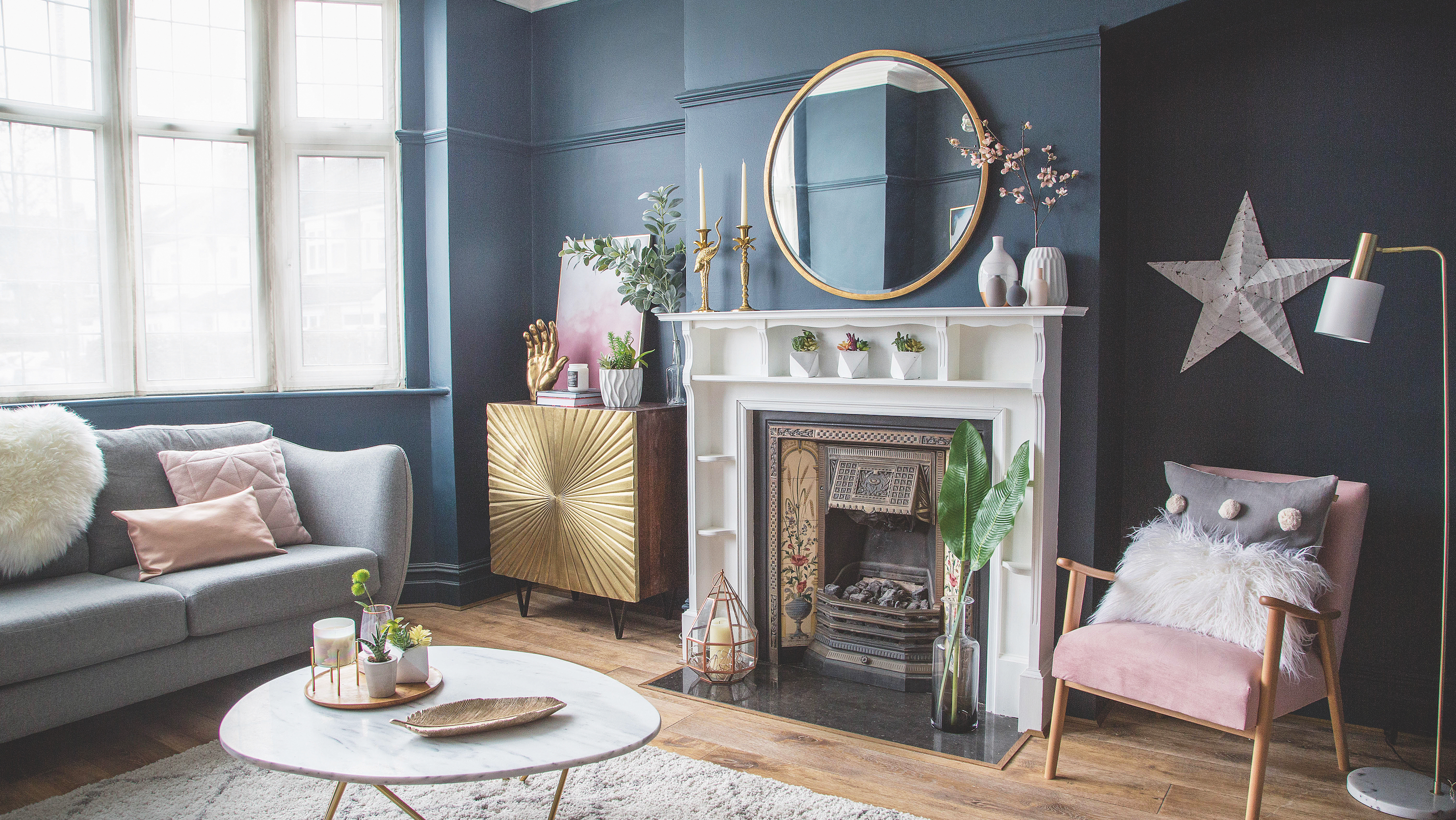
The phrase 'hearth and home' conjures up images of gathering around the fireplace with loved ones, of security, warmth and comfort. But there's a practical meaning behind the emotive word.
The hearth is the floor of the fire, designed to protect our living space from the heat of the flames, hot ashes and glowing embers – anything that might burn beyond the fire itself and ignite our property.
Usually, the hearth reaches beyond the fire, extending out to the sides and front. This larger hearth can protect flooring from sparks and ash, but over time it has taken on a decorative function, too. Choosing a hearth and styling it with fireside accessories are now essential elements of the smartest fireplace ideas.
Fireplace hearth idea
Typical materials for fireplace hearth ideas include stone, slate, brick, concrete and tile – robust, non-combustible surfaces that will protect your home from high temperatures and the fire's flames. Select your hearth's material carefully and you'll elevate it beyond a practical must-have into a stylish addition to your room's decorating scheme.
1. Tile the hearth for colour and pattern

Tiling a hearth is a great way to bring colour and pattern to your room scheme – and it works whether you have a functioning fireplace or you're looking to enhance an empty space where a fire once stood.
Fireplace tile ideas can include colourful glazes, geometric or period patterns, or interesting laying techniques, such as herringbone designs.
'Tiles are the perfect way to bring colour and pattern to a fireplace. Opt for a small, brick effect tile in a deep brooding colour to add instant drama,' suggests Abbas Youssefi, Director of independent tile specialists, Porcelain Superstore.
Sign up to our newsletter for style inspiration, real homes, project and garden advice and shopping know-how
'For working fireplaces, porcelain tiles are perfect for a fireplace from both a practical and aesthetic view. The porcelain will absorb the heat without transferring it to its surroundings. Where possible, tiles should be fixed to cement backer boards, which are unaffected by heat.
'If you want to bring life to a faux fireplace, ceramic tiles can also be used to add that instant wow.
'Just remember, fireplaces emit a lot of ash. And while tiles might not stain, grout joints can. Where possible, use epoxy grouts which are far harder to stain than traditional cement-based grouts. To keep your tiles looking great, ensure you wipe them over with a damp cloth when the fire is not being used.'
2. Lay a rugged brick hearth

Brick would have traditionally formed a hearth in a farmhouse or cottage but it can work just as well today, as a rugged contrast to a Victorian or Edwardian-style fireplace.
You could inset the hearth so that it sits flush with rest of the room's flooring. But a brick hearth works well as a raised feature that supports the whole fireplace and emphasises its status as a focal feature in a living space. You might also complement a brick hearth with exposed brick walls elsewhere in the room, to create a balance of finishes and materials.
3. Fill an empty hearth with decorative elements

An inglenook fireplace would once have been more than a home's heat source. It would have been where meals were cooked and family members sat on built-in benches to be close to the flames.
Today, most homes have central heating and an open fire or wood burner is an attractive add-on, as important for the atmosphere it creates as the warmth it gives out. If you have a large fireplace, you may feel it's not worth the effort or expense to fill it with all the logs it needs to create a decent fire. So what do you do with it instead?
'Rather than leave an uninviting, empty hole where the fire used to be, fill the space with objects that have an appeal in their own right,' says Ideal Home's Deputy Editor, Ginevra Benedetti. 'You could arrange a library of books and magazines across the hearth, with a chair nearby where you can curl up and read. Or fill it with houseplants to create a mini jungle indoors as a cool way to make your houseplants look stylish.'
Fit a chimney balloon to ensure that no draughts find their way down the flue and that your home's heat doesn't escape through the fireplace.
4. Install a raised hearth for a high-rise fire
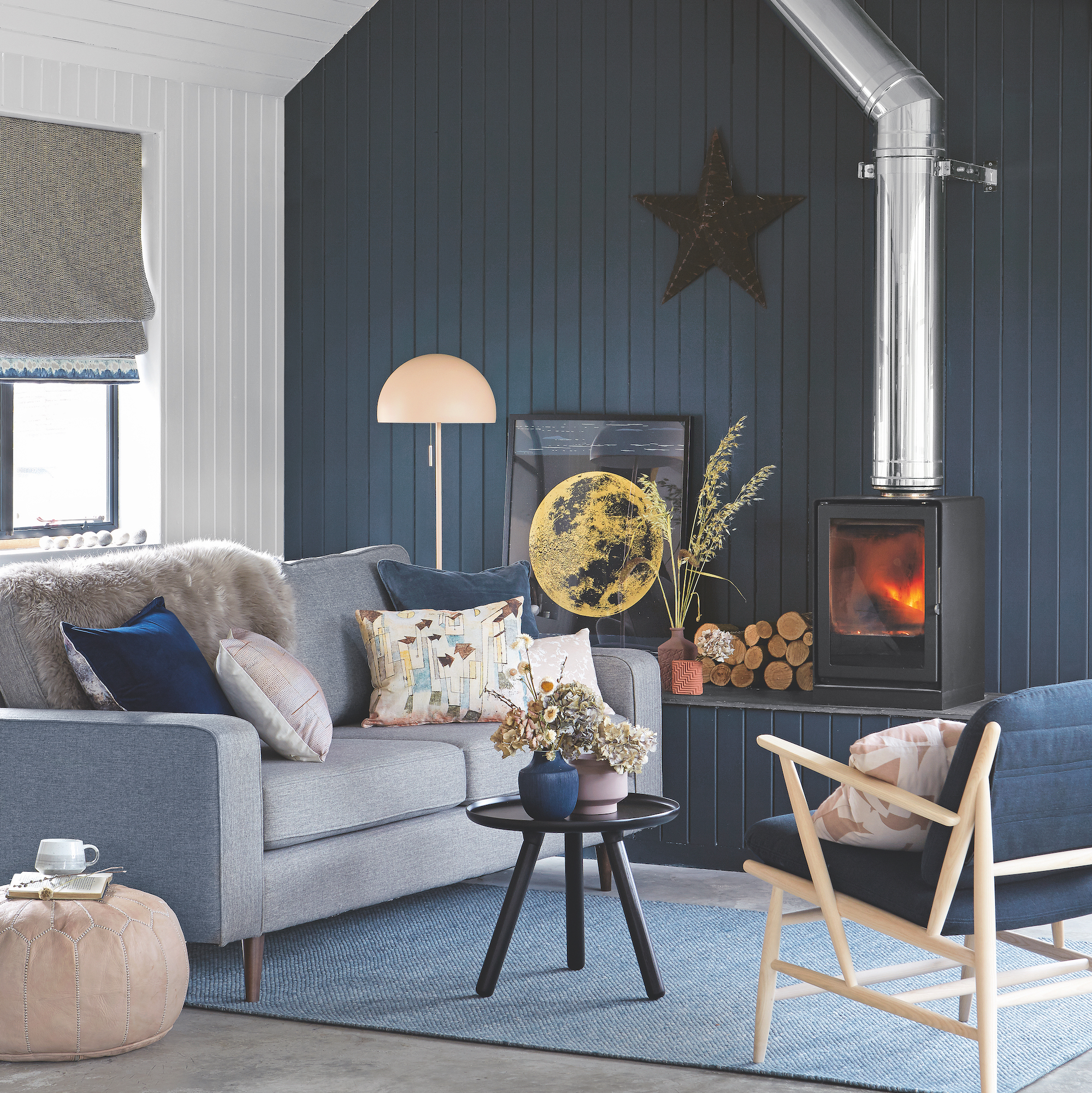
While stoves are often built into an existing fireplace, your wood burner ideas don't have to stick to the same old formula. Raising your wood burner onto a raised platform or hearth can make it more of a focal point, and make it easier to gaze into the flickering flames for a relaxing evening.
You'll need to ensure your hearth as the same heat-resistant properties as a typical fireplace installation, so you may need to choose a surface made from stone, slate or tile.
Make the high-rise hearth a feature in its own right by choosing a colour and finish that contrasts with the wall behind, or do as above, and integrate it into your room's decor. The wall panelling ideas in this room include painting the stove wall a dark blue to contrast with the white walls in the rest of the space, drawing attention to the stove and creating a rich backdrop for the flames to glow against.
5. Put wood, kindling and fire irons on the hearth

If you're burning wood or eco logs on your fire or in your wood burner, you're going to have to consider where to stash your kindling and decide on log storage ideas for both inside and outside the home.
Your hearth is a handy platform for all the kit and clobber you need to burn a real fire, including baskets for logs and kindling, boxes for fire lighters and matches, and fire irons and brushes for tending the fire and cleaning ashes from the grate.
‘A crackling fire demands the most stylish of fireside accessories. As the fire roars and the embers burn, luxury log storage enhances the overall look and means colder nights can be enjoyed with fewer trips to the woodshed,' suggests Dani Taylor, product and creative Director, Cox & Cox.
'Finish your fireplace with a fireside set – there’s something deeply satisfying about tending an open fire. With poker, shovel, tongs and brush, you’ll have everything you need.’
6. Fit a guard rail around the hearth
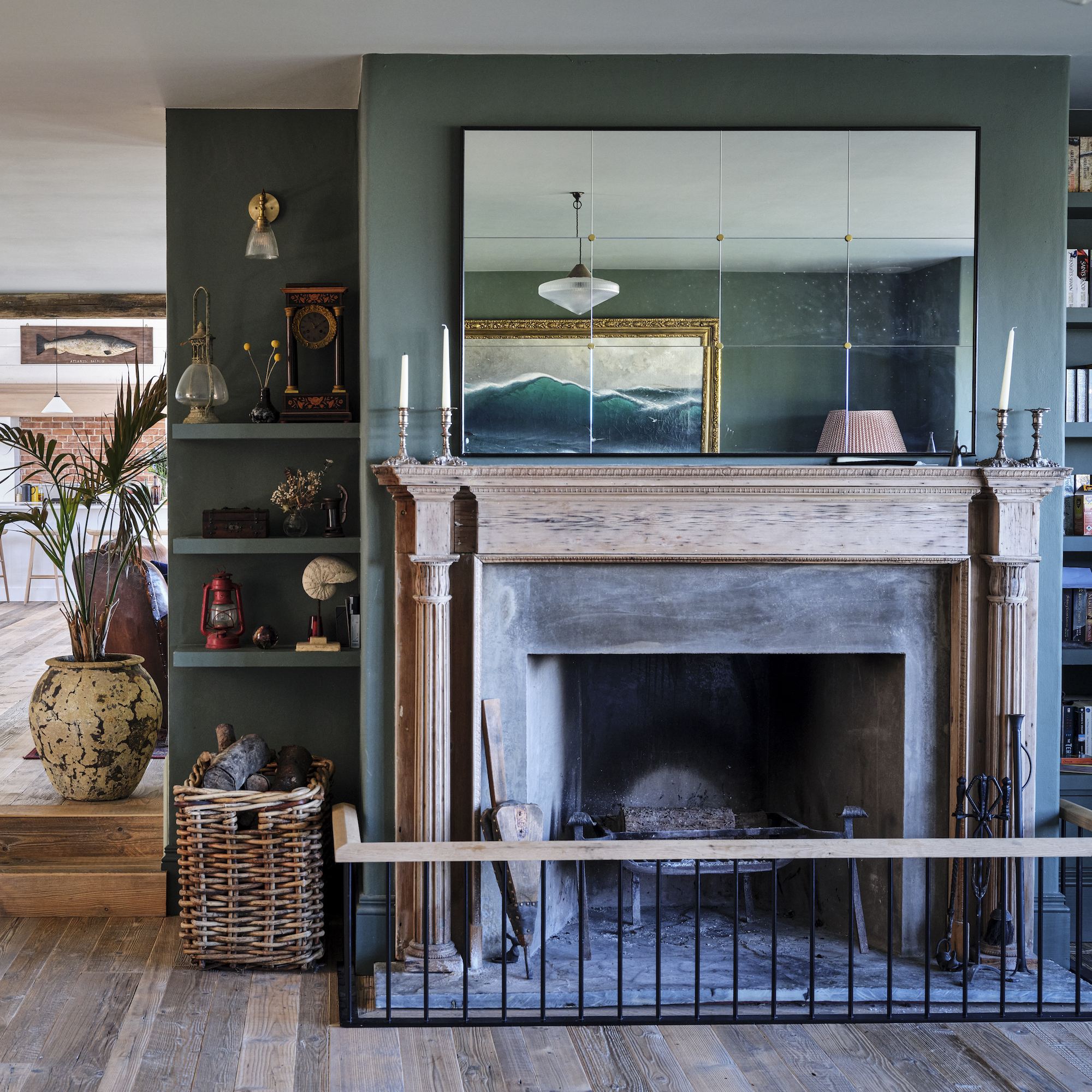
If you have young children, you'll want to invest in a substantial fire guard to put around your fireplace to keep them safe. But these can be unnecessary – and look unsightly – if you just want to warn people not to stand too close to the fire.
'A built-in rail or fire guard can create a barrier that works as both a visual "stand back" sign, and a physical deterrent to stop wayward toy balls (is that just us?) rolling into the fire, or people accidentally tripping over the edge of a raised hearth.
'You can be original or replica low brass rails that would suit a Victorian fireplace, or choose a slightly taller, contemporary design that follows encloses the hearth,' says Ideal Home's Ginevra Benedetti.
7. Choose a fireplace with a coordinated hearth
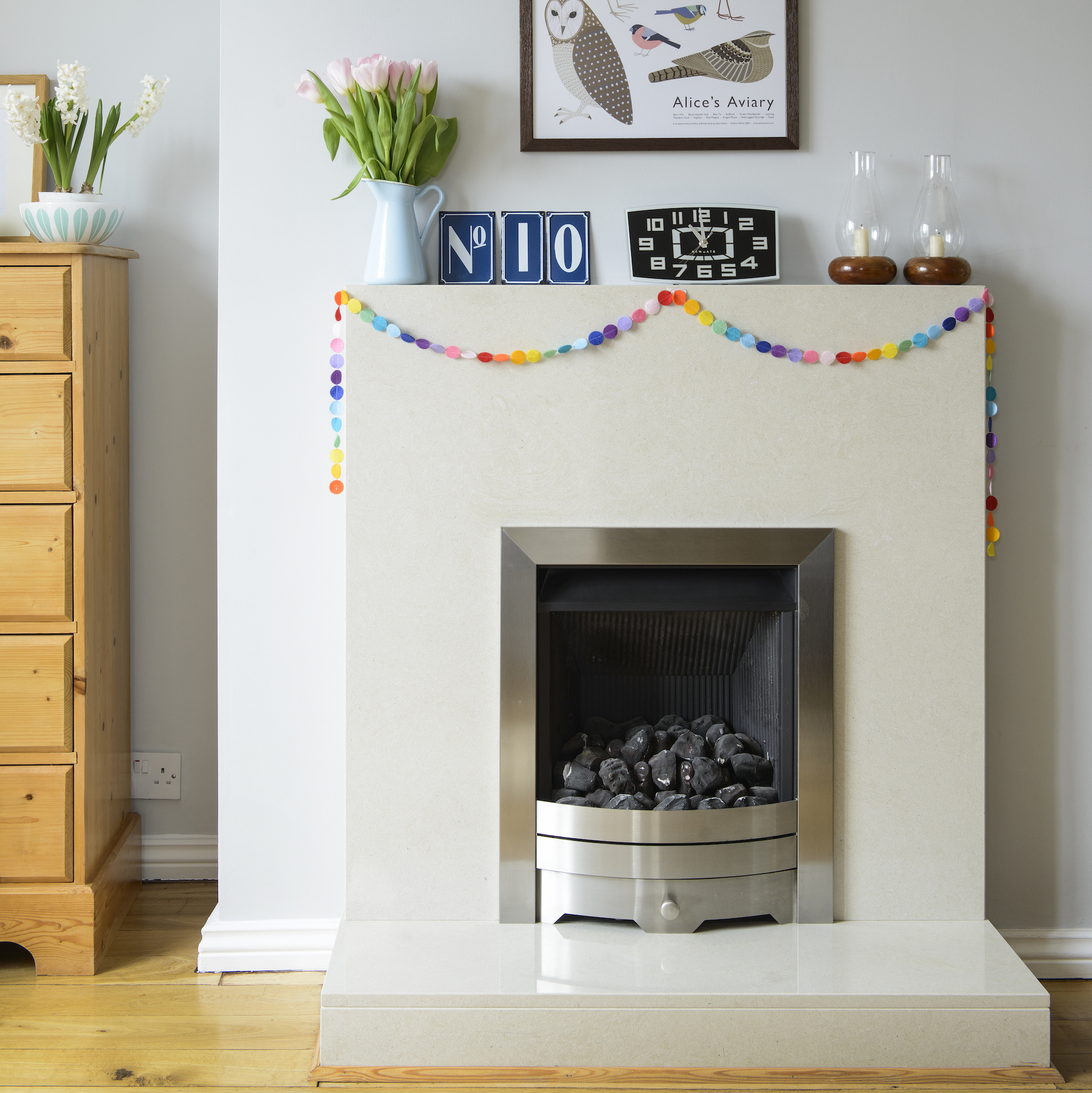
If you plan to install a completely new fireplace, consider choosing a design with a coordinating hearth. Many modern fireplace ideas will integrate the fire surround and the hearth to give a streamlined look that suits a contemporary-style home.
With a design like this, the focus really is on the fire itself. Whether you choose a gas fire with a real-flame effect over faux log or coals, a wood burner or a traditional fire basket, make sure it looks as attractive when it's unlit as it does when the fire is burning.
8. Put a fender seat around a large hearth
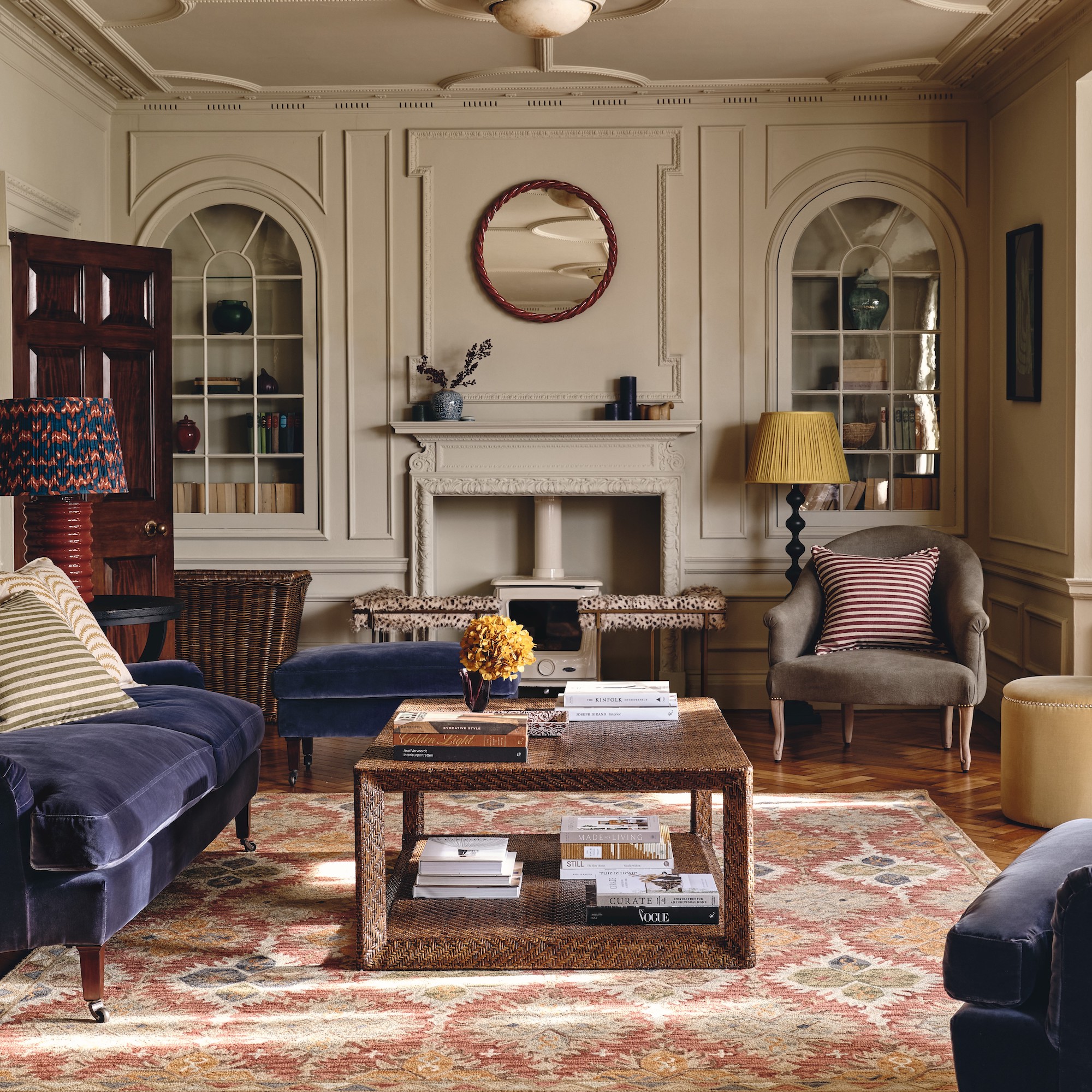
Interior designer Emma Sims Hilditch is a big fan of fireside fender seats and often includes them in her room schemes. A cross between a seat and a fireguard, they provide a place to perch to warm fingers and toes by the flames of the fire.
'I might use studding on the upholstery of the chairs and sofas, then echo that in a studded detail around the fender,' she says.
While you could match the fabric used in the rest of the room on the fender, it's also an opportunity to draw attention to the hearth with a dramatic pattern or bold colour.
9. Accessorise the hearth for added style
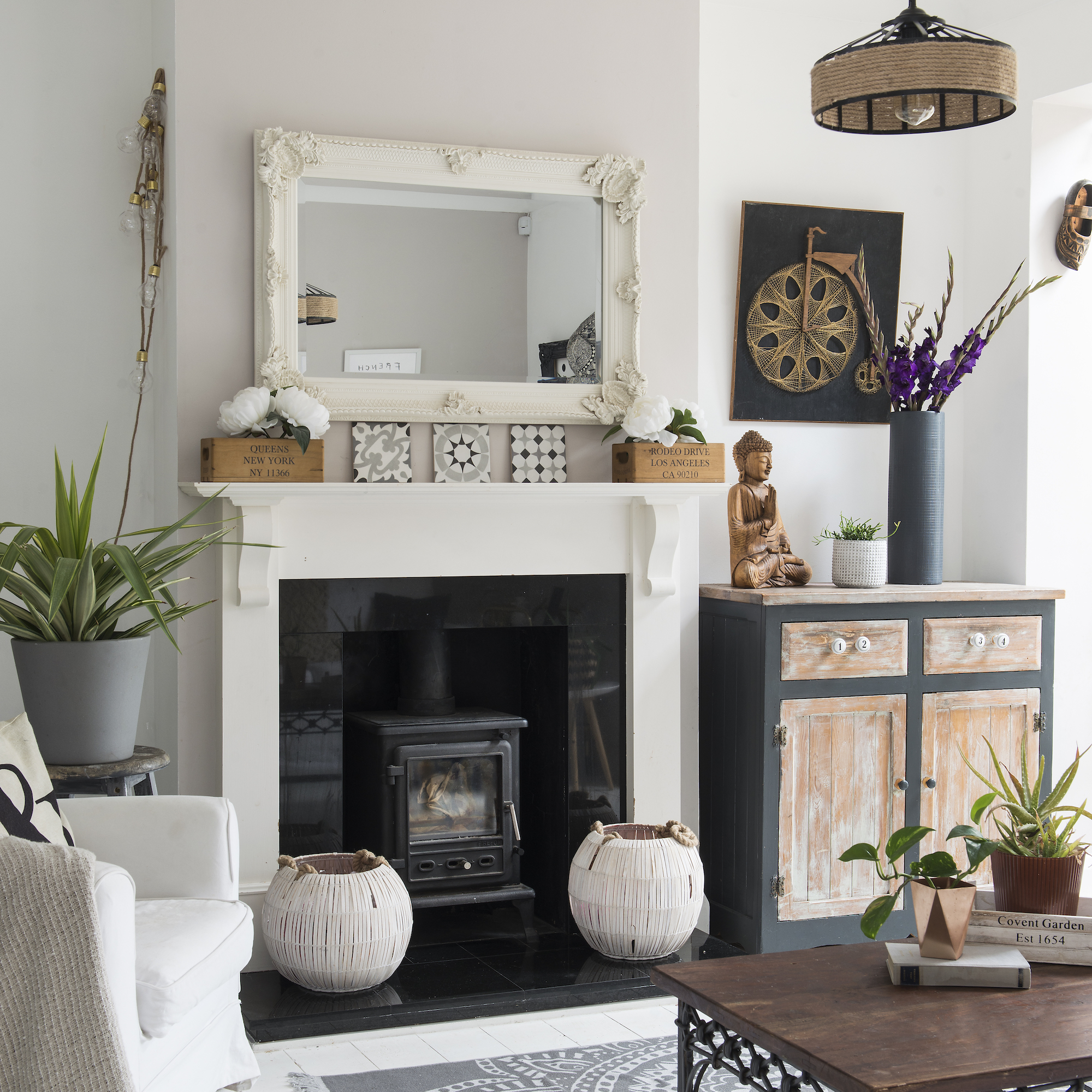
It's likely that your fire will go unlit most of the time, so your fireplace needs to look good all year round. This is where decorative accessories come in. While you could choose a look you love and stick with it, why not have fun with your display and style your hearth seasonally? Pots of bulbs in springtime, a bouquet of bright blooms in the summer, pumpkins and golden leave in autumn, candles and fairy lights in winter – you get the picture!
For extra display prowess, complement your hearth accessories with your mantelpiece ideas – using similar colours and motifs in both areas.
10. Consider not having a hearth at all
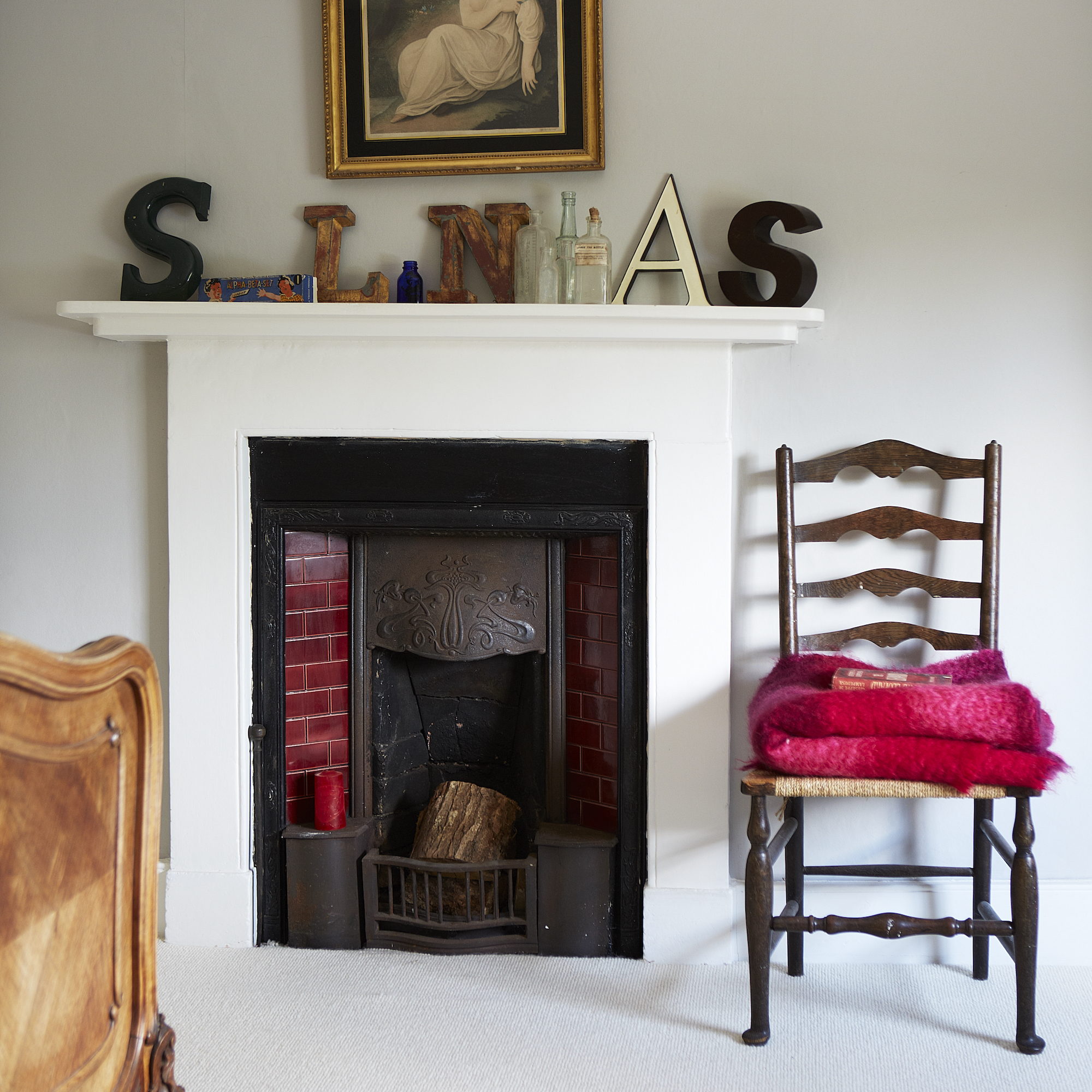
While a hearth has a valuable role to play to protect your home from sparks and ash, it's not strictly necessary if you don't actually use your fireplace. In that case, and especially when you're considering small living room fireplace ideas, you may want to do away with a hearth altogether.
Without a hearth extending into the room, you can take your flooring right up to the fireplace, giving a streamlined look that can make the space seem larger.
What can I use for a fireplace hearth?
'You can use any stone, ceramic tile or brick for fireplace hearths,' says Owen Pacey, founder of fireplace experts Renaissance London. 'They provide a great opportunity to add further texture, colour and height to your fireplace and can add more interest to the space overall.'
What size should a fireplace hearth be?
There is no one size fits all solution here.
'It's important to take into account the size of the room, along with the size of the fireplace opening; it's all about proportions,' explains interior designer Jojo Bradley.
'When styling a hearth remember the practical elements. If a log basket is required you can’t go wrong with a wicker one but if you are going for a more modern look then creating a niche either side of the fireplace can also work well for log storage.
'As a general rule, I would stay away from a dark hearth with a gas fire. These fires are a no-mess solution and it works beautifully if the hearth and stone surround are all the same colour and finish.'
Do modern fireplaces have hearths?
'While electric fireplaces don’t actually require hearths, modern fireplaces do benefit,' confirms Owen Pacey from Renaissance London. 'The hearth is there to protect the floor from spitting embers. I’d always suggest slate with marble or marble with marble.'

Andrea began her journalism career at Ideal Home and is currently Editor of our sister title, Country Homes & Interiors, which celebrates modern country style. Andrea is passionate about colour and how it can transform both our homes and our sense of wellbeing, and has completed The Power of Colour course with the prestigious KLC School of Design. Andrea's career spans interiors magazines, women's lifestyle titles and newspapers. After her first job at Ideal Home, she moved on to women's magazines, Options and Frank. From there it was on to the launch of Red magazine, where she stayed for 10 years and became Assistant Editor. She then shifted into freelancing, and spent 14 years writing for everyone from The Telegraph to The Sunday Times, Livingetc, Stylist and Woman & Home. She was then offered the job as Editor of Country Homes & Interiors, and now combines that role with writing for idealhome.co.uk.